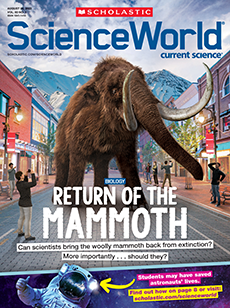Imagine a time when women weren’t allowed to attend universities, vote, or even own property. The only scientists were wealthy men. Now imagine a girl from a poor family upending everything people thought they knew about life on Earth. That girl was Mary Anning. She lived in England in the early 1800s, and over the course of her life, she discovered some of the most amazing fossils—the preserved remains of ancient lifeforms—ever unearthed.
NGSS: Core Idea: ESS1.C, LS4.A
CCSS: Writing: 2
TEKS: 6.4A, 7.4A, 8.4A, ESS.7D

